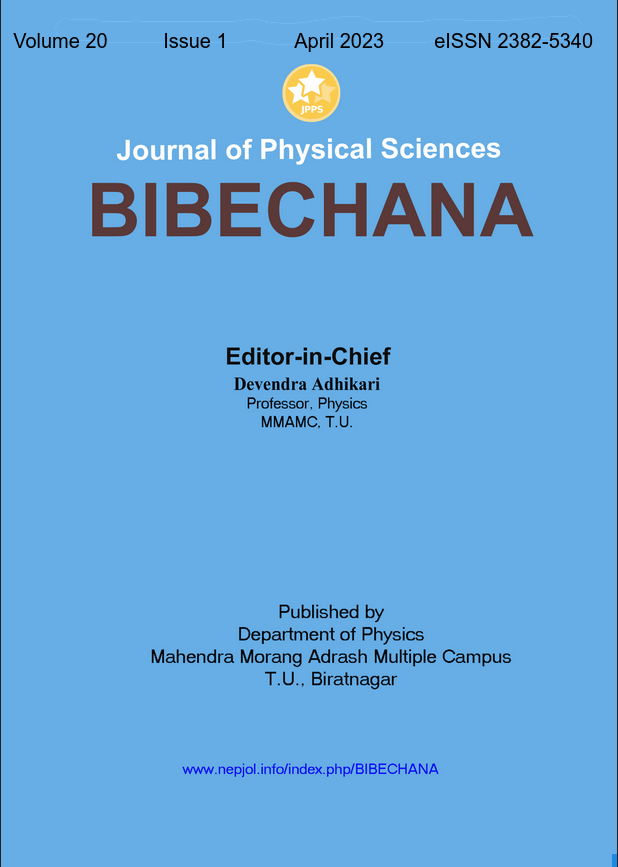Analysis of phytochemicals and biological activities of rhizome of Curcuma longa, aerial parts of Centella asiatica, and corn silk of Zea mays
DOI:
https://doi.org/10.3126/bibechana.v20i1.52006Keywords:
Curcuma longa , Centella asiatica, Zea mays, phytochemical screening, antioxidant, anti-diabeticAbstract
Nepal is a storehouse of medicinal plants. Medicinal plants like the rhizome of Curcuma longa, the aerial part of Centella asiatica, and corn silk of Zea mays were used traditionally as medicine for diseases like inflammation, hepatic disorders, cough, etc. In this study, these selected plants were subjected to the analysis of phytochemical constituents, and biological activities following standard methods. Phytochemical analysis of the methanolic extract of these selected plants revealed the presence of different chemical constituents such as polyphenols, flavonoids, glycosides, quinones, saponins, and tannins. C. longa rhizomes also showed the strongest DPPH radical scavenging activity with IC50 of 55.06 µg/mL which was very close to standard ascorbic acid (49.09 µg/mL) than that of the aerial part of C. asiatica (72.56µg/mL) and corn silk of Z. mays (131.96 µg/mL). Total phenolic and total flavonoid content was found highest in C. longa with the values of 195.95 ± 0.899 mg GEA/g and 56.45 ±4.056 mg QE/g respectively. The phenolic and flavonoid content of methanolic extract of aerial parts of C. asiatica was found to be 110.78 ± 1.984 mg GEA/g and 30.00 ± 2.358 mg QE/g and corn silk of Z. mays were found to be 65.92 ± 1.244 mg GEA/g and 18.50 ±1.424 mg QE/g respectively. The methanolic extract of rhizomes of C. longa exhibited high α-amylase inhibitory activity with IC50 values of 382.30 µg/mL than that of C. asiatica with IC50 value of 520.48 µg/mL and Z. mays with IC50 value 593.09 µg/mL.
Downloads
Downloads
Published
How to Cite
Issue
Section
License
Copyright (c) 2023 Ayusha Hyaunmikha, Bimala Subba

This work is licensed under a Creative Commons Attribution-NonCommercial 4.0 International License.
This license enables reusers to distribute, remix, adapt, and build upon the material in any medium or format for noncommercial purposes only, and only so long as attribution is given to the creator.




